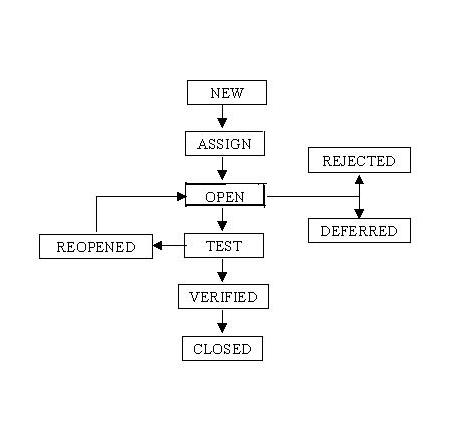Defect Life Cycle (Bug Life cycle) is the journey of a defect from its identification to its closure. The Life Cycle varies from organization to organization and is governed by the software testing process the organization or project follows and/or the Defect tracking tool being used.

New: When a defect is logged and posted for the first time. It’s state is given as new.
Assigned: After the tester has posted the bug, the lead of the tester approves that the bug is genuine and he assigns the bug to corresponding developer and the developer team. It’s state given as assigned.
Open: At this state the developer has started analyzing and working on the defect fix.
Fixed: When developer makes necessary code changes and verifies the changes then he/she can make bug status as ‘Fixed’ and the bug is passed to testing team.
Pending retest: After fixing the defect the developer has given that particular code for retesting to the tester. Here the testing is pending on the testers end. Hence its status is pending retest.
Retest: At this stage the tester do the retesting of the changed code which developer has given to him to check whether the defect got fixed or not.
Verified: The tester tests the bug again after it got fixed by the developer. If the bug is not present in the software, he approves that the bug is fixed and changes the status to “verified”.
Reopen: If the bug still exists even after the bug is fixed by the developer, the tester changes the status to “reopened”. The bug goes through the life cycle once again.
Closed: Once the bug is fixed, it is tested by the tester. If the tester feels that the bug no longer exists in the software, he changes the status of the bug to “closed”. This state means that the bug is fixed, tested and approved.
Duplicate: If the bug is repeated twice or the two bugs mention the same concept of the bug, then one bug status is changed to “duplicate“.
Rejected: If the developer feels that the bug is not genuine, he rejects the bug. Then the state of the bug is changed to “rejected”.
Deferred: The bug, changed to deferred state means the bug is expected to be fixed in next releases. The reasons for changing the bug to this state have many factors. Some of them are priority of the bug may be low, lack of time for the release or the bug may not have major effect on the software.
Not a bug: The state given as “Not a bug” if there is no change in the functionality of the application. For an example: If customer asks for some change in the look and field of the application like change of colour of some text then it is not a bug but just some change in the looks of the application.
No comments:
Post a Comment